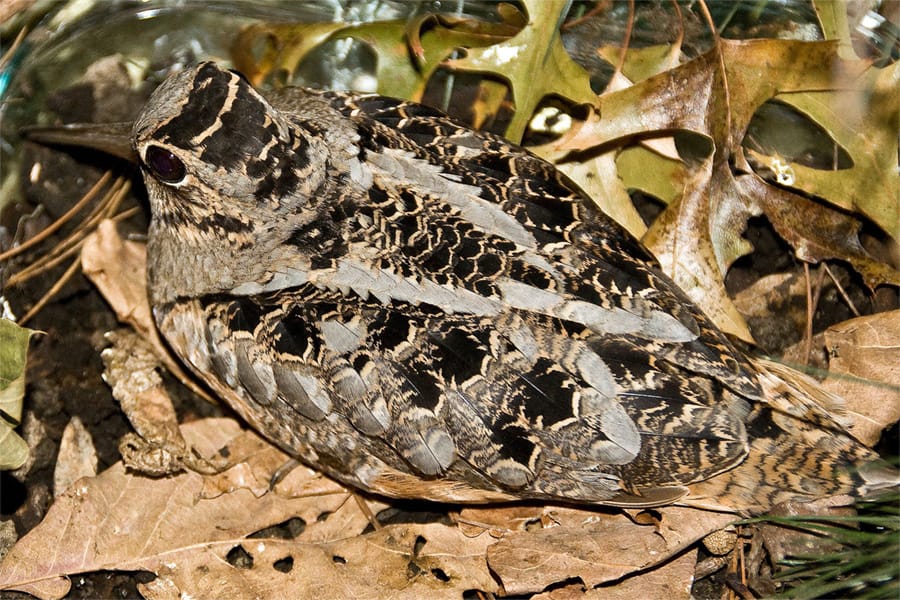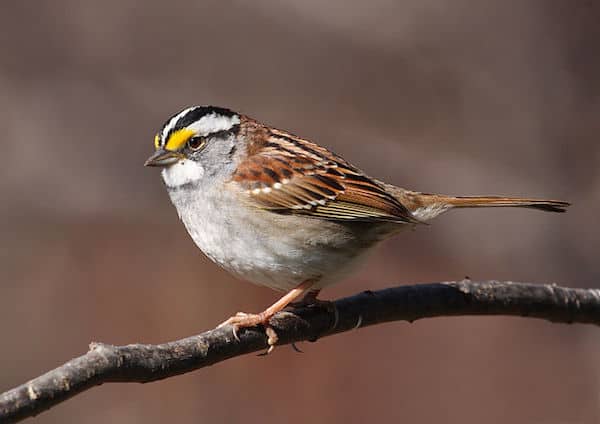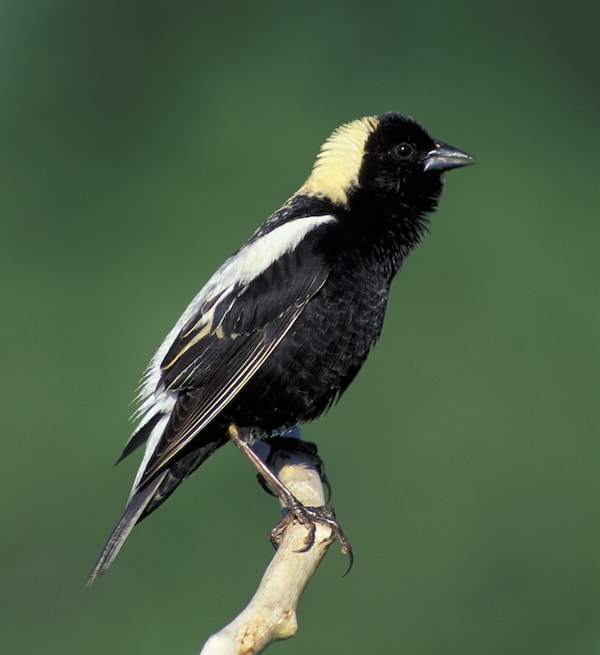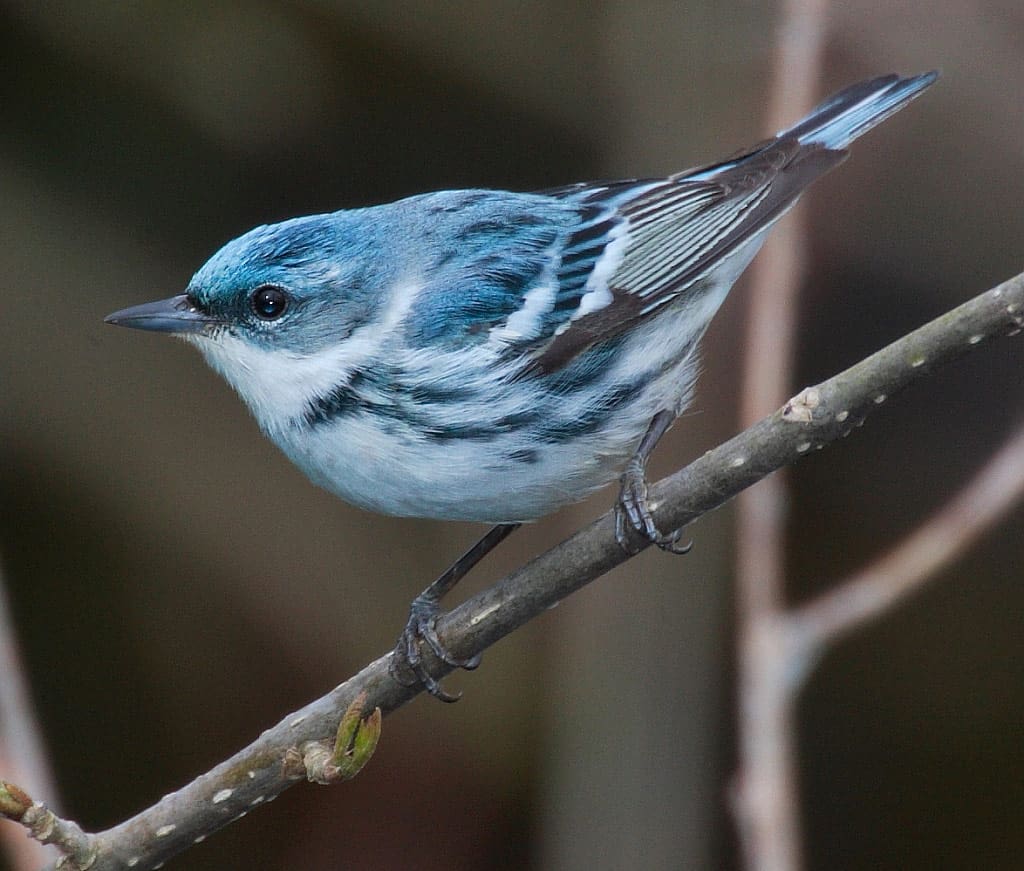Spring Birds of Virginia (March, April, May)
It is said that in Virginia spring comes in on “kitty-cat toes,” and this really is how the season changes here. The vernal equinox is still more than a month away when the first mournful call of the mourning dove whispers that a change is on the way. Soon the signs are all around us. Willows along the roadside begin to glow a dusky orange, a sure signal that the sap is rising. A walk through swampy spots will reveal the noxious flowers of skunk cabbage, often pushing up through the frozen crust of the marsh. Crocus blossoms break the ground in late February and red maple begins to bloom.
Folklore tells us that the bluebird chooses its sweetheart on Valentine’s Day, and this is certainly the time to get the boxes cleaned up and ready for occupancy. The birds no longer gather in the loose flocks associated with winter weather. Now the colorful male begins to serenade a prospective mate and both birds can be seen looking over suitable nesting sites. If the weather is warm, the female may start incubating within a few weeks.
By March bright splashes of yellow forsythia are all over the landscape and the delicate pastels of the ornamental fruit trees are not far behind. Anyone who feeds birds will start to notice subtle changes. The white-throated sparrow seems to become more colorful, the stripes on the head now sharp and distinct. Their clear whistled song, Oh, sweet Canada, Canada, Canada rings out with the dawn. Chickadees and titmice flit around in pairs, often guarding territory, and the nuthatches become more vocal. This is also the time of year that cardinals, mockingbirds, and robins may begin a serious battle with their reflections in windows and patio doors.
Difficult to locate at most times of the year, the woodcock steps on to center stage in early March when they gather in suitable grassy areas for their bizarre courtship flights. Also known as timberdoodle, fairydiddle, and hookum-pake, the male woodcocks begin their ritual at dusk, with a bird calling from the ground. The harsh, buzzy notes are almost like some sort of mechanical sound. Suddenly a bird will rise skyward, spiraling straight up, sometimes as high as 300 feet. After hovering for a few seconds, the descent begins, accompanied by a soft “twittering” sound produced by the wings. The female, lurking near the edge of the field, makes her selection and the new season begins.
The first purple martin scouts usually return around the middle of March and are even earlier on the coast. Largest of the swallows, the martin has long been a favorite due to its voracious appetite for flying insects. Native Americans suspended gourds in the villages to encourage the presence of the birds and many people today enjoy hosting a purple martin colony. Other swallows can soon be expected, including the beautiful tree swallow and its dowdy relative, the rough-winged.
For most of the waterfowl species, numbers begin to decrease as the ducks, swans, and geese start their flight to the North. Double-crested cormorants as well as red-breasted mergansers sometimes appear on the rivers as they pause in their journey toward the breeding grounds. Wood ducks, difficult to find during the winter, suddenly become more common, and blue-winged teal return.
By March the bald eagle has already begun to work at refurbishing last year’s nest and will soon be incubating. Down by the creek, the jaunty song of the Louisiana waterthrush can be heard, and a search for this warbler will reveal a somber, streak-breasted bird teetering back and forth as it forages near the ground. The tiny blue-gray gnatcatcher, with its long white-edged tail, gives its thin, whining call note from the treetops, and the yellow-throated warbler has returned to the sycamores along the river.
In the yard the loud, machine-gun sound known as gutter-drumming indicates that a woodpecker, usually the red-bellied, has established a territory that includes a house. Because it occurs at dawn this behavior can be annoying, but the bird rarely causes any real structural damage and will eventually turn its energy toward excavating a nest. A slightly more disagreeable sign of spring may be the hordes of returning blackbirds that sometimes descend on feeders. Fortunately, many of them are migrants and will move on to suitable breeding habitat.
For the bird watcher, April 15 is more than “tax deadline,” it is the day to get the feeders ready for returning ruby-throated hummingbirds. This species, the only one known to nest in Virginia, spends the winter in Mexico and Central America. In spring the return coincides with the bloom of the azaleas, one of the bird’s favorite plants. Offer a solution of one part sugar to four parts water, and be sure to keep the feeders clean. The easiest way to attract the birds is to place the feeder near plants that have tubular-shaped red blossoms. Frequently the number of hummingbirds at the feeder will decline after early May as some of the birds that had been in the yard continue their migration north.
In the mountain region early May is the peak of warbler migration and provides the opportunity to see 20 different species in a single day. All of the breeding birds are back on territory by then and the northbound migrants are still in the area. Warbler identification is much easier in spring, as opposed to fall, because birds are in breeding plumage and frequently sing. Along the peaks of the Blue Ridge look for nesting cerulean, Blackburnian, Canada, and black-throated blue warblers. Redstarts, ovenbirds, prairie warblers, and yellowthroats are common at lower elevations. Migrant blackpolls move through in good numbers, and it is also possible to find Tennessee, Nashville, and Wilson’s warblers.
At the coast shorebird migration peaks around the second week of May. Red knots, often numbering in the thousands, pause along the barrier islands to feed on the eggs of horse-shoe crabs. Dowitchers, godwits, and a variety of sandpipers can also be seen. The herons, ibis, egrets, and brown pelican are back on territory. By late May spring is beginning to slip imperceptibly into summer.




